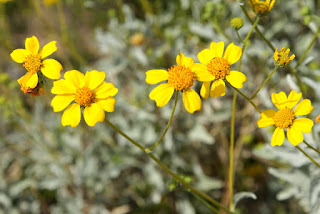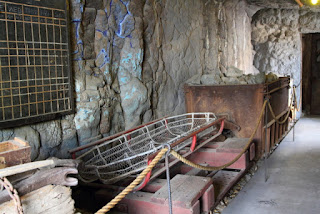Also located at Park of the Canals is the Brinton Desert Botanical Garden and a series of hiking trails.
The Mesa City Cemetery is located near Park of the Canals and contains the grave of one of Mesa's most well-know citizens - Ernesto Miranda!
Miranda had a long history of law violations from the time he was in grade school. For several years he was in-and-out of reform school and then when he was older he was in-and-out of jail in various states.
On march 13, 1963, at the age of 22, Miranda was arrested for kidnapping and rape, and confessed to the crime. However, he was never informed of his right to have an attorney present, or of his right to remain silent. A 73-year old attorney was assigned to represent Miranda at the trial.
At the trial, Miranda was convicted of rape and kidnapping and sentenced to 20-to-30 years on both charges. The attorney appealed the case to the Arizona Supreme Court, but the charges were upheld.
The case was submitted to the U.S. Supreme Court, but the attorney (now 75 years old) was unable to take the case because of health reasons. Therefore, attorneys from the law firm of Lewis & Roca were assigned pro bono.
In 1966 Chief Justice Earl Warren wrote the opinion in Miranda v. Arizona in favor of Miranda. The opinion stated "The person in custody must, prior to interrogation, be clearly informed that he has the right to remain silent, and that anything he says will be used against him in court, he must be clearly informed that the has the right to consult with a lawyer and to have the lawyer with him during interrogation, and that, if he is indigent, a lawyer will be appointed to represent him."
Since Miranda was never informed of his rights, the Supreme Court set aside Mirands's conviction. The State of Arizona retried Miranda, omitting his confession from the trial, and once again convicted him and sentenced him to 20-to-30 years in prison. However, Mirinda was paroled a few years later and then started a business selling autographed Miranda warning cards for $1.50 each.
Unfortunately, Miranda could not stay out of trouble and was arrested numerous times and eventually sent back to prison for violating his parole.
Four years later he was again paroled, but was then involved in a violent bar fight in Phoenix and received a lethal knife wound. He was pronounced dead when he arrived at Good Samaritan Hospital. Several Miranda cards were found on his person!
The Sirrine House is located in the historic area of Mesa, not far from the cemetery. The house was built in 1896 by Joel Sirrine, who was one of the original settlers that arrived in 1878. The house is now on the National Register of Historic Places and is open for public tours on weekends.
Located at 1450 E. Downing Street is the house that we purchased in January 1973. At that time, the house was located on the fringe of Mesa's City Limits and there were citrus groves to the north and east.
Shortly after moving in we were awaken one night to the sound of an airplane that was about to crash into the house. As it turned out, the ambient temperature had dropped to near freezing and the farmers flooded the citrus fields and then started large airplane engines (with propellers attached) to circulate air through the citrus fields to keep the fruit from freezing.
 |
| January 1973 File Photograph |
 |
| January 1973 File Photograph |
Millions of years after the dinosaurs, the Southwest Indians arrived, built adobe structures, and farmed the desert area with the help of water from the Salt River that was delivered through an elaborate canal system.
There is also a section of the museum is dedicated to artifacts from Mexico and South America,
After spending 20 years in Arizona searching for the Lost Dutchman Gold Mine, I finally located the mine - in the basement of the museum! I could not find any gold in the mine; however, in the courtyard behind the museum it was possible to pan for gold in some mineral rich pools. (Don't tell anyone; but in just one pan full of material, I found the Mother Lode!).
And lastly, part of the museum is dedicated to Territorial Jails. After seeing the jail living conditions, I was definitely ready to head back to the hotel with its modern conveniences!













































No comments:
Post a Comment